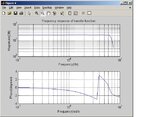oshaye3
Member level 3
Hi all,
Thanks to you guys in this forum. You are doing excellent things! I wanted to break my high order polynomials into second orders using Matlab in the form of as^2 + bs + c.
for example : I have a transfer function as
1
----------------------------------------------
s^4 + 1.804 s^3 + 2.627 s^2 + 2.026 s + 0.8286
I need to factorize it into second order form as
1
-----------------------------------
(as^2 + bs + c)(as^2 + bs + c)
Any response is highly appreciated!
Thanks to you guys in this forum. You are doing excellent things! I wanted to break my high order polynomials into second orders using Matlab in the form of as^2 + bs + c.
for example : I have a transfer function as
1
----------------------------------------------
s^4 + 1.804 s^3 + 2.627 s^2 + 2.026 s + 0.8286
I need to factorize it into second order form as
1
-----------------------------------
(as^2 + bs + c)(as^2 + bs + c)
Any response is highly appreciated!
